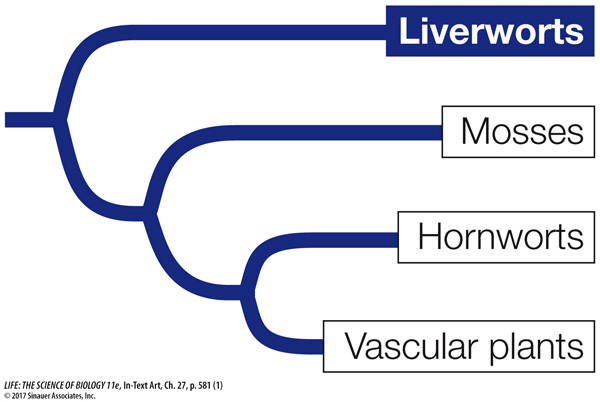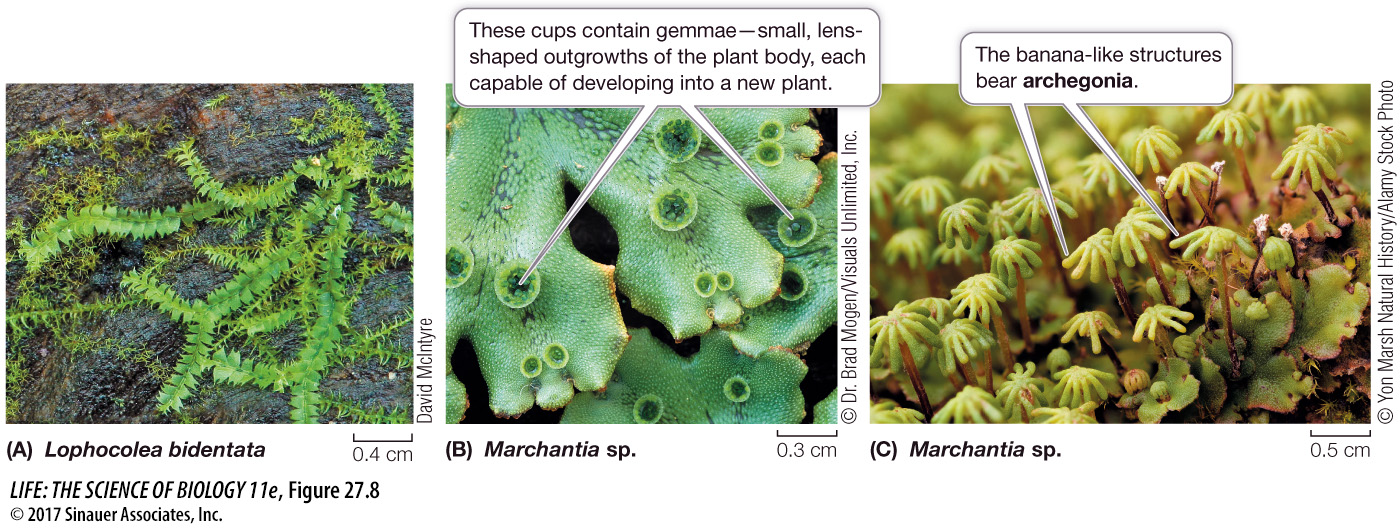Liverworts are the sister clade of the remaining land plants

There are about 9,000 species of liverworts. Most liverworts have leafy gametophytes (Figure 27.8A). Some have thalloid gametophytes: green, leaflike layers that lie flat on the ground (Figure 27.8B and C). The simplest liverwort gametophytes are flat plates of cells, a centimeter or so long, that produce antheridia or archegonia on their upper surfaces and rhizoids (rootlike filaments) on their lower surfaces.

Liverwort sporophytes are shorter than those of mosses and hornworts, rarely exceeding a few millimeters. The liverwort sporophyte has a stalk that raises the sporangium above the gametophyte. In most species, the stalk elongates by expansion of cells throughout its length. This elongation raises the sporangium above ground level, allowing the spores to be dispersed more widely. The sporangia of liverworts are simple: a globular sporangium wall surrounds a mass of spores. In some species of liverworts, spores are not released by the sporophyte until the surrounding sporangium wall rots. In other liverworts, however, the spores are thrown from the sporangium by structures that shorten and compress as they dry out. When the stress becomes sufficient, the compressed structure snaps back to its resting position, throwing spores in all directions.
Among the most familiar thalloid liverworts are species of the genus Marchantia. Marchantia is easily recognized by the characteristic structures on which its male and female gametophytes bear their antheridia and archegonia (see Figure 27.8C). Like most liverworts, Marchantia also reproduces asexually by simple fragmentation of the gametophyte. In addition, Marchantia and some other liverworts and mosses reproduce asexually by means of gemmae (singular gemma), which are lens-
Media Clip 27.3 Liverwort Life Cycle
www.life11e.com/